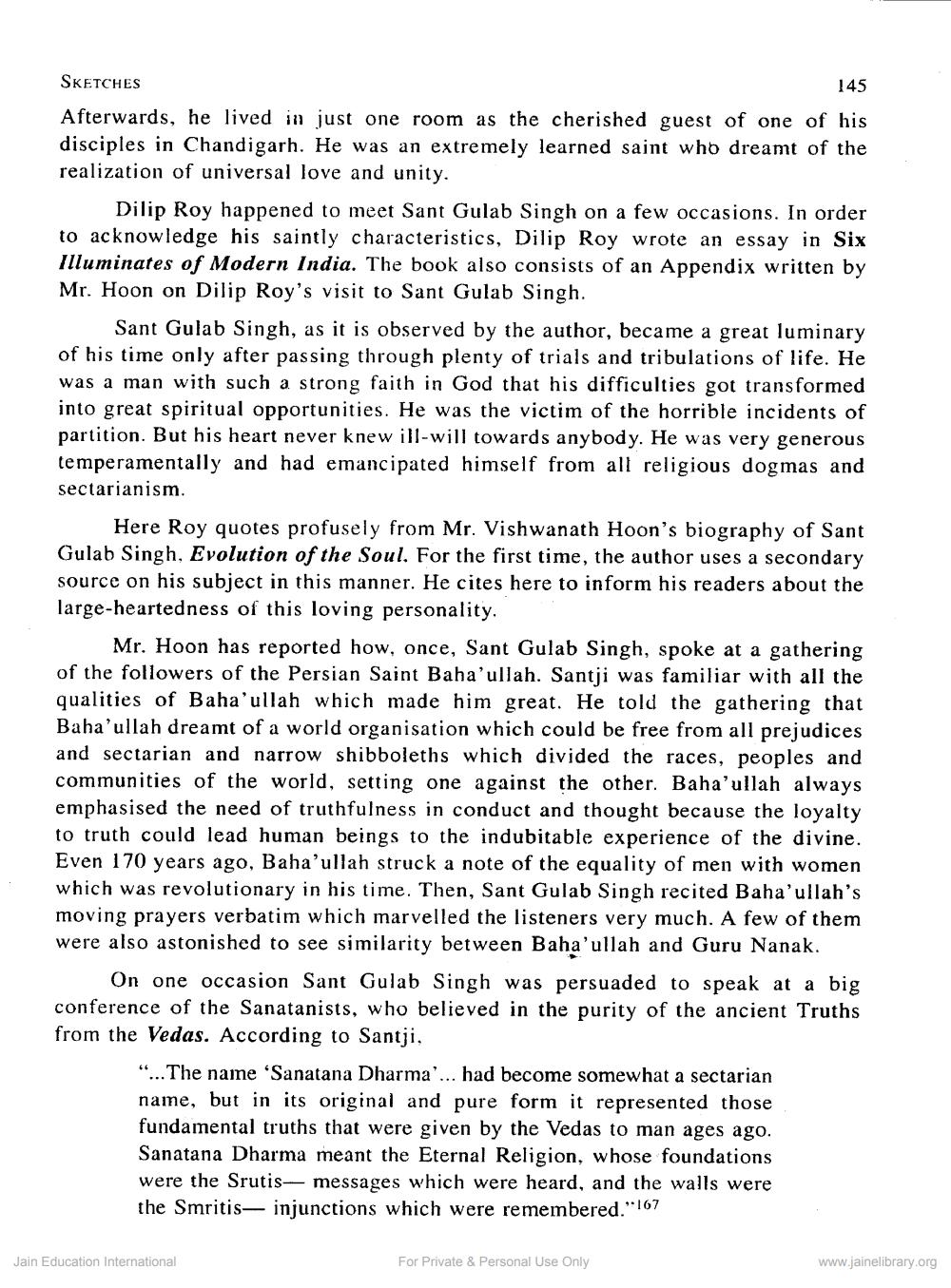________________
SKETCHES
145 Afterwards, he lived in just one room as the cherished guest of one of his disciples in Chandigarh. He was an extremely learned saint who dreamt of the realization of universal love and unity.
Dilip Roy happened to meet Sant Gulab Singh on a few occasions. In order to acknowledge his saintly characteristics, Dilip Roy wrote an essay in Six Illuminates of Modern India. The book also consists of an Appendix written by Mr. Hoon on Dilip Roy's visit to Sant Gulab Singh.
Sant Gulab Singh, as it is observed by the author, became a great luminary of his time only after passing through plenty of trials and tribulations of life. He was a man with such a strong faith in God that his difficulties got transformed into great spiritual opportunities. He was the victim of the horrible incidents of partition. But his heart never knew ill-will towards anybody. He was very generous temperamentally and had emancipated himself from all religious dogmas and sectarianism.
Here Roy quotes profusely from Mr. Vishwanath Hoon's biography of Sant Gulab Singh, Evolution of the Soul. For the first time, the author uses a secondary source on his subject in this manner. He cites here to inform his readers about the Targe-heartedness of this loving personality.
Mr. Hoon has reported how, once, Sant Gulab Singh, spoke at a gathering of the followers of the Persian Saint Baha'ullah. Santji was familiar with all the qualities of Baha'ullah which made him great. He told the gathering that Baha'ullah dreamt of a world organisation which could be free from all prejudices and sectarian and narrow shibboleths which divided the races, peoples and communities of the world, setting one against the other. Baha'ullah always emphasised the need of truthfulness in conduct and thought because the loyalty to truth could lead human beings to the indubitable experience of the divine. Even 170 years ago, Baha'ullah struck a note of the equality of men with women which was revolutionary in his time. Then, Sant Gulab Singh recited Baha'ullah's moving prayers verbatim which marvelled the listeners very much. A few of them were also astonished to see similarity between Baha'ullah and Guru Nanak.
On one occasion Sant Gulab Singh was persuaded to speak at a big conference of the Sanatanists, who believed in the purity of the ancient Truths from the Vedas. According to Santji,
“... The name 'Sanatana Dharma'... had become somewhat a sectarian name, but in its original and pure form it represented those fundamental truths that were given by the Vedas to man ages ago. Sanatana Dharma meant the Eternal Religion, whose foundations were the Srutis- messages which were heard, and the walls were the Smritis- injunctions which were remembered."167
Jain Education International
For Private & Personal Use Only
www.jainelibrary.org




